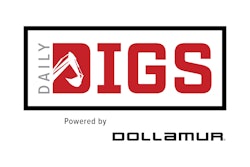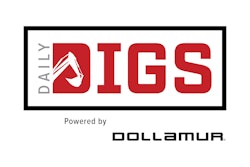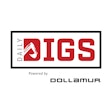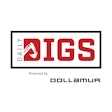There's nothing routine about routine maintenance when synthetic turf systems sustain burns, tears and spills
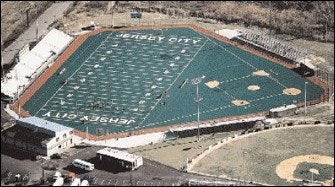
Think of the family room in your home. It's probably one of the more well-traveled and utilized rooms in your house. During any given week, and often daily, family and friends will gather there, and they may bring with them an assortment of toys, pets, food and drink. During that week, there is probably going to be at least one accident - and maybe more.
Multiply that scenario by one hundred or more and you'll get an idea of the kind of abuse a synthetic turf field takes week after week. A typical field might host dozens of activities and several hundred or thousand visitors in a week. In all likelihood, the surrounding stadium or field complex will serve a complete menu of food, beverages and condiments, vehicles will pass over the field surface a time or two and Mother Nature will throw in her own special brand of abuse. In addition, vandalism is part of the equation at many facilities, regardless of the security systems put in place. Acts of vandalism might include burns, unusual vehicular traffic and the removal of "souvenir" pieces of synthetic turf.
Accidents can happen, in other words, and will - and in addition to occurring more frequently than those you'd expect to happen in your family room, they'll involve a much wider array of materials. Fortunately, there are some relatively simple procedures you can follow to ensure a long, useful life for synthetic turf systems. Routine maintenance procedures - vaccuuming, sweeping, washing with a high-pressure hose - will help keep turf looking new, but eventually all facility managers will face a host of minor and not-so-minor problems. Performing repairs and maintenance on a timely basis will ensure the integrity and longevity of any synthetic turf system is maintained.
The following should be considered remedial procedures for some of the more common problem areas:
• Tears. Tears in turf can occur in many ways. Minor tears (less than one foot long) can be easily repaired by an in-house maintenance person. If damage is greater than that, you should consider calling your manufacturer or installer for assistance.
Two items are needed for this repair - an upholstery needle and heavy-gauge nylon thread. A loop stitch is effective in closing most small tears. Simply thread the needle through both pieces of turf fabric; once the needle passes through the second piece of turf fabric, form a loop, bring the needle back through the loop and pull tightly.
This technique allows each stitch to be locked independently of other stitches. Repeat this procedure with stitches no more than a half-inch apart until the area is completely and tightly closed.
• Holes. In situations where a souvenir has been taken, treat the damage much as you would a tear. Making repairs of one square foot or less can usually be accomplished using the loop stitch technique and a piece of replacement turf. You may need adhesive depending on the size and location of the damage. Repairs larger than one square foot should be completed by a trained technician.
• Burns. This common injury to synthetic turf systems can be caused by a variety of thrown objects or spilled substances, from cigarettes to chemicals. Effective repair of burns requires replacement of damaged turf. While these repairs could be made by cutting away affected areas and sewing in squares of replacement turf, it is recommended that a trained technician be called in to deal with this type of damage. A trained technician can check for damage to the turf and pad, making sure proper repairs are made.
• Open Seams. All permanent synthetic turf systems are installed using sewn or glued seams between sections. Reputable manufacturers and installers warrant seams for a specific period of time. A quick review of your warranty agreement will tell you if your system is covered by the manufacturer or installer.
If your turf system uses sewn seams, a loop stitch will close a seam as effectively as it will a tear. Glued seams require the use of an approved adhesive. If you're not sure of the proper brand of adhesive for your particular synthetic turf system, ask your manufacturer or installer.
Like turf tears, seam damage should be repaired by an experienced technician if the damage exceeds one foot in length.
• Spills. Because of the wide variety of activities taking place and large number of people taking part in them, spills on a synthetic turf system are inevitable. As you'd expect, prompt attention to spills is key to limiting damage.
The non-playing areas of turf are particularly vulnerable to spills and stains. After an on-the-field event, you'd be wise to inspect the entire field, giving particular attention to the sideline areas.
If you know that a spill is not toxic, begin by blotting it from the outside edges, working your way to the middle of the spill. This helps prevent the spill from spreading. Fresh spills may also be treated using dry absorbents - even commercial cat litter works well. Your turf manufacturer or installer should be able to recommend suitable products. Keep a supply on hand so you can quickly react in case of a spill.
Stains caused by sports drinks, soft drinks, beer, tobacco juice, ice cream and bird droppings - and, for that matter, those caused by marshmallows, tomato juice, milk, food coloring, tea, cocoa, condiments, butter, grape juice or coffee - may be removed using a solution of about one teaspoon of granular household detergent mixed in a quart of warm water.
To handle most of these stains, apply the detergent solution sparingly to the affected area. Scrub the area with a white (or clear) synthetic fiber brush. Once the area has been cleaned, flush the area with clean water. Failure to properly rinse the detergent from the turf may leave a visible residue on the surface.
For stubborn stains, consider commercial carpet cleaning solutions. Your manufacturer or installer can make recommendations, or you can contact a reputable carpet cleaning contractor experienced in commercial cleaning applications.
• Chewing Gum. This is another common stain on synthetic turf systems. To remove chewing gum effectively, simply freeze it using aerosol refrigerants (available from most carpet cleaning suppliers) or dry ice. Once the gum is frozen, use a flat object (such as a kitchen spatula) to remove it. If there is a particularly heavy buildup of chewing gum, you may need to treat the area several times.
• Tougher Stains. Certain substances are much more difficult to remove from synthetic turf. These may include: asphalt, petroleum-based products, floor wax, motor oil (or grease), suntan lotion, crayons, shoe polish, lipstick, rubber cleat marks and tire marks.
Several factors should be considered when addressing these types of stains. Not only are they difficult to remove, but they may be irritating to skin and eyes, and may often require the use of stain-removal products - which themselves may irritate the eyes and skin of people using them. Some of these products may even require professional technicians wearing protective gear.
There is also a vast difference in turf fibers, padding systems and markings used. If an owner's manual came with your turf system, refer to it for these specific stains and their removal.
Caution should be used when dealing with any such stains, since attempts to remove them may make them worse or permanently damage fibers, padding or markings. For these problems, the most prudent procedure may be to call the company that installed or manufactured your turf system.
• Padding Systems. There are many types of padding systems used with today's synthetic turf surfaces. Many of the repair techniques described are effective on the padding systems as well as the turf. If, upon investigation, you cannot determine if there is damage to the padding system, the turf manufacturer or installer may have to be called in to ensure the integrity of the pad hasn't been compromised.
To effectively repair turf damage, act quickly. Address the problem as soon as you discover the damage, no matter how minor it may look at first.
Most spills and damage are small in nature and can be effectively addressed by a competent repair person. On occasion, however, there may be large spills or accidents that cannot be effectively managed by the methods described here. In those situations, call the manufacturer immediately, as damage may become more extensive if not quickly and properly treated.
You may wish to consult the maintenance and repair procedures provided by the manufacturer as part of your warranty package and take care of the problem on your own. But before attempting to clean any spills or repair physical damage, make sure you completely understand the nature of the damage and recommended remedial action. If you have any doubt as to how to proceed, take the sensible course of action - call the company that manufactured or installed your synthetic turf system for more specific information or to schedule professional repairs.



















